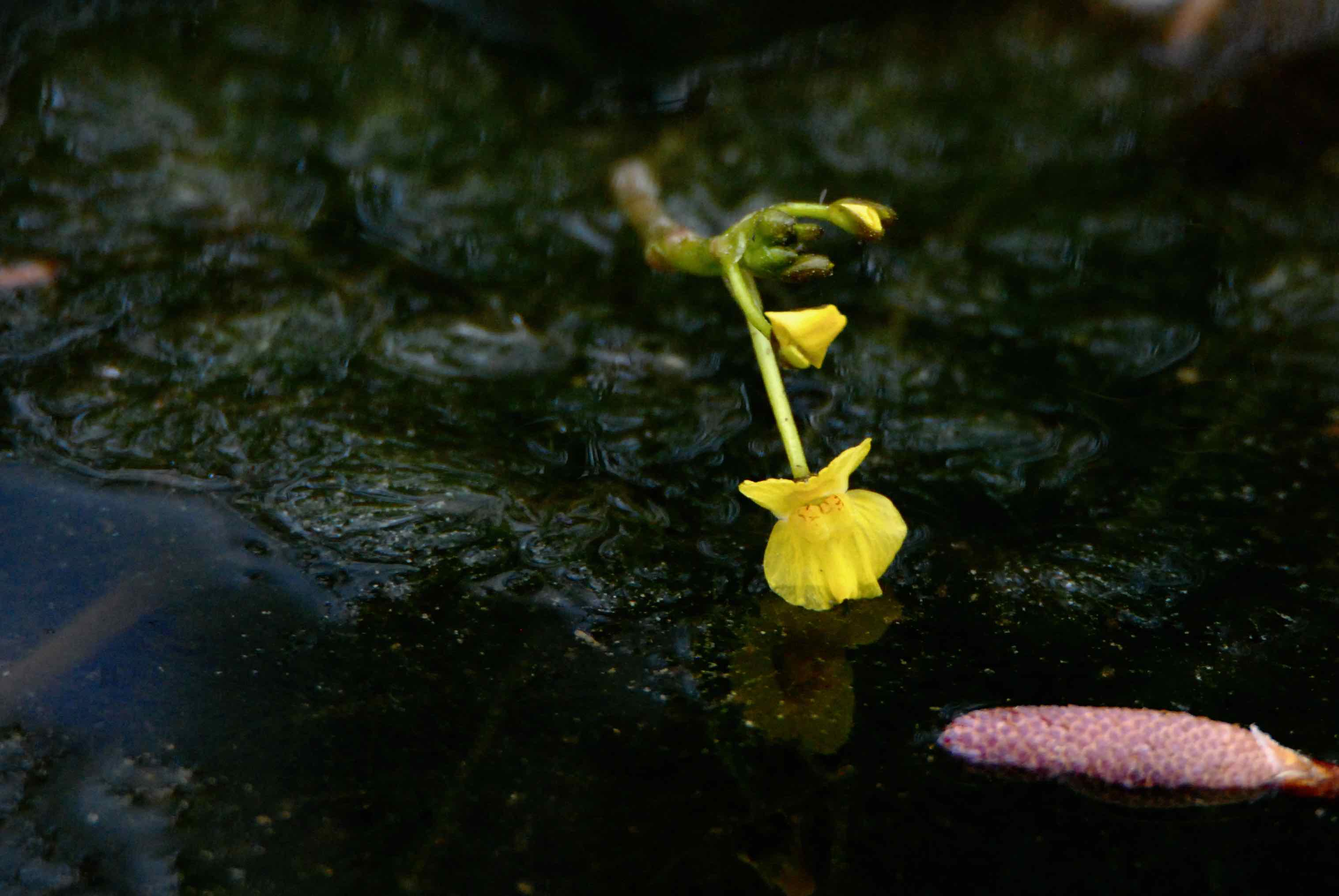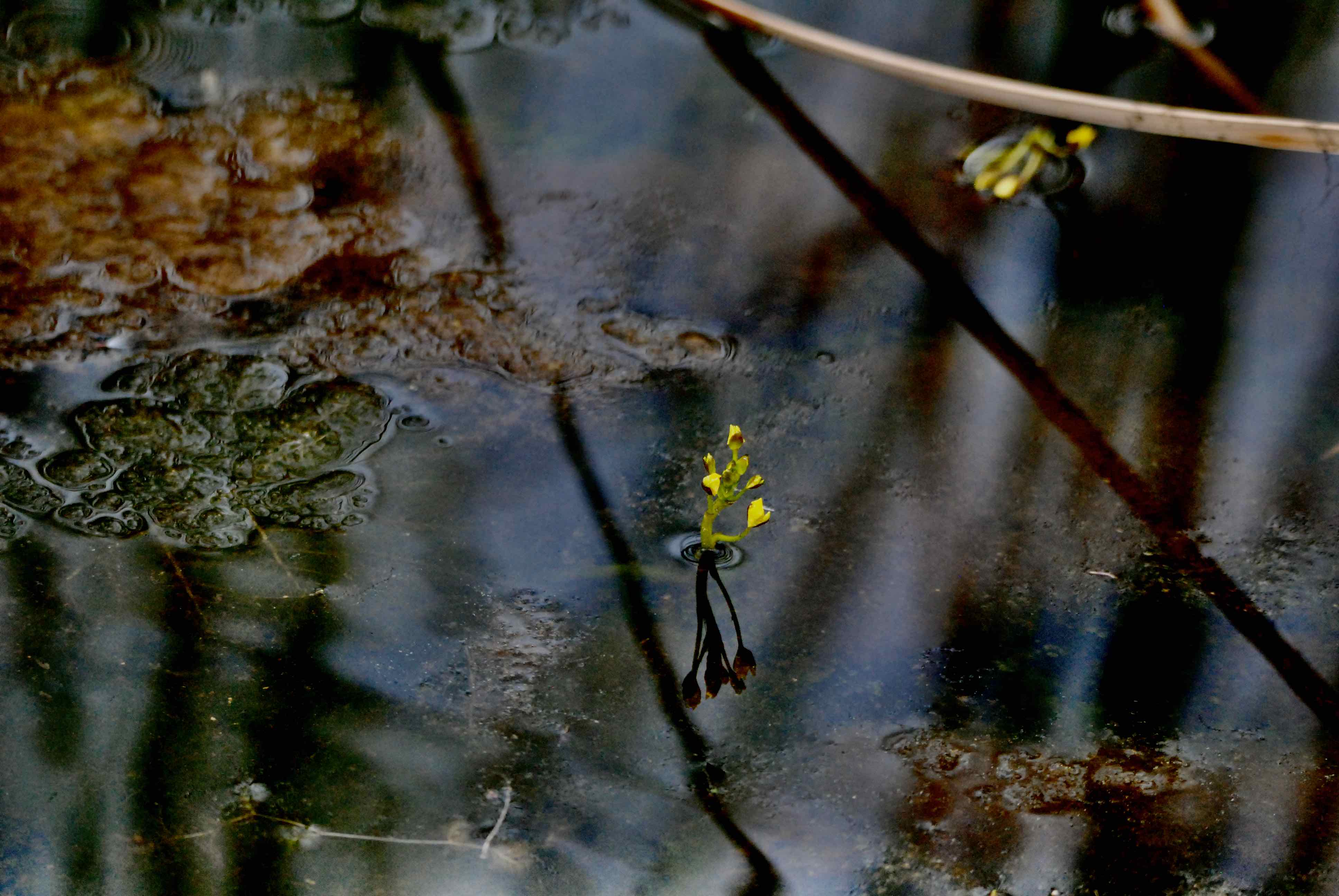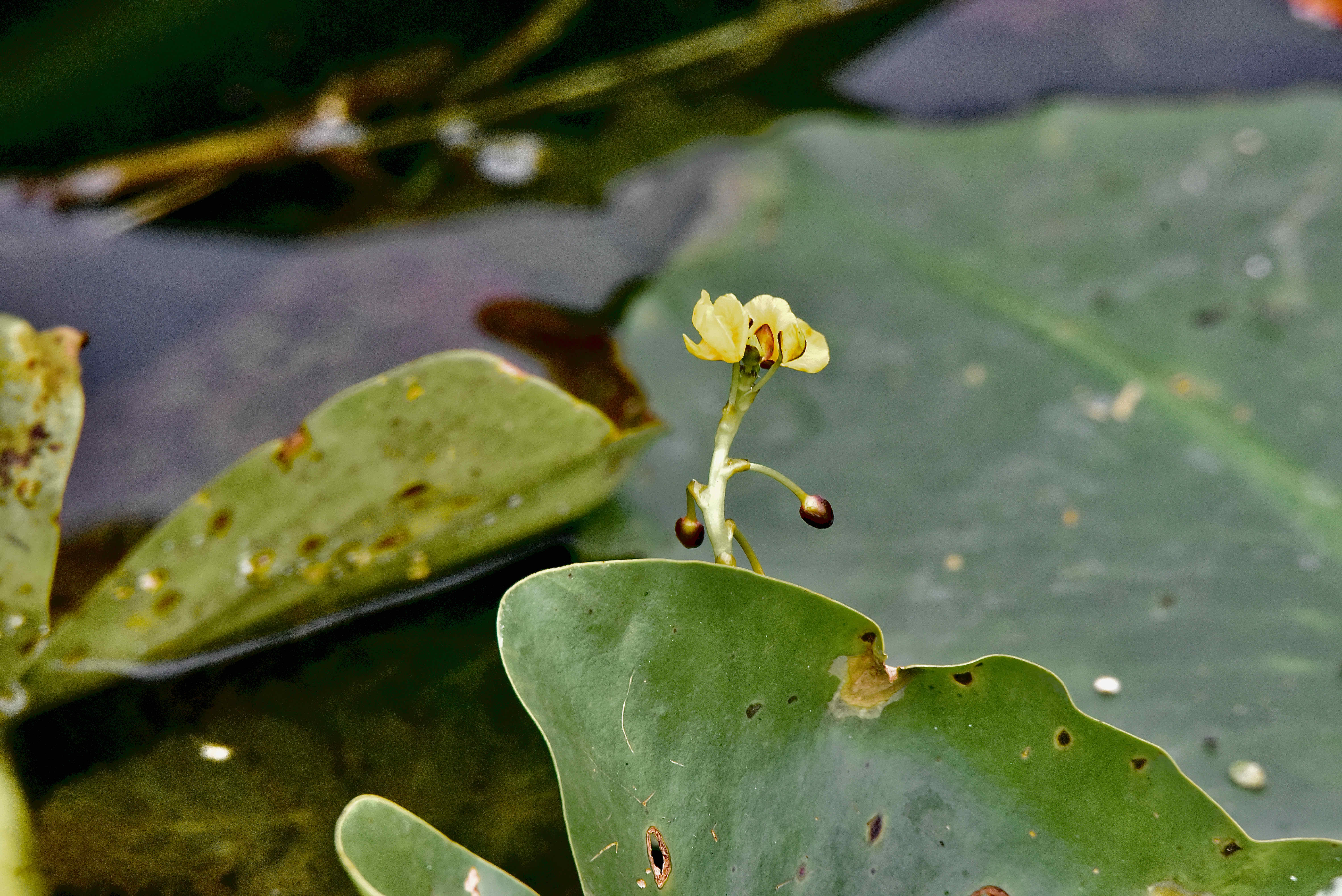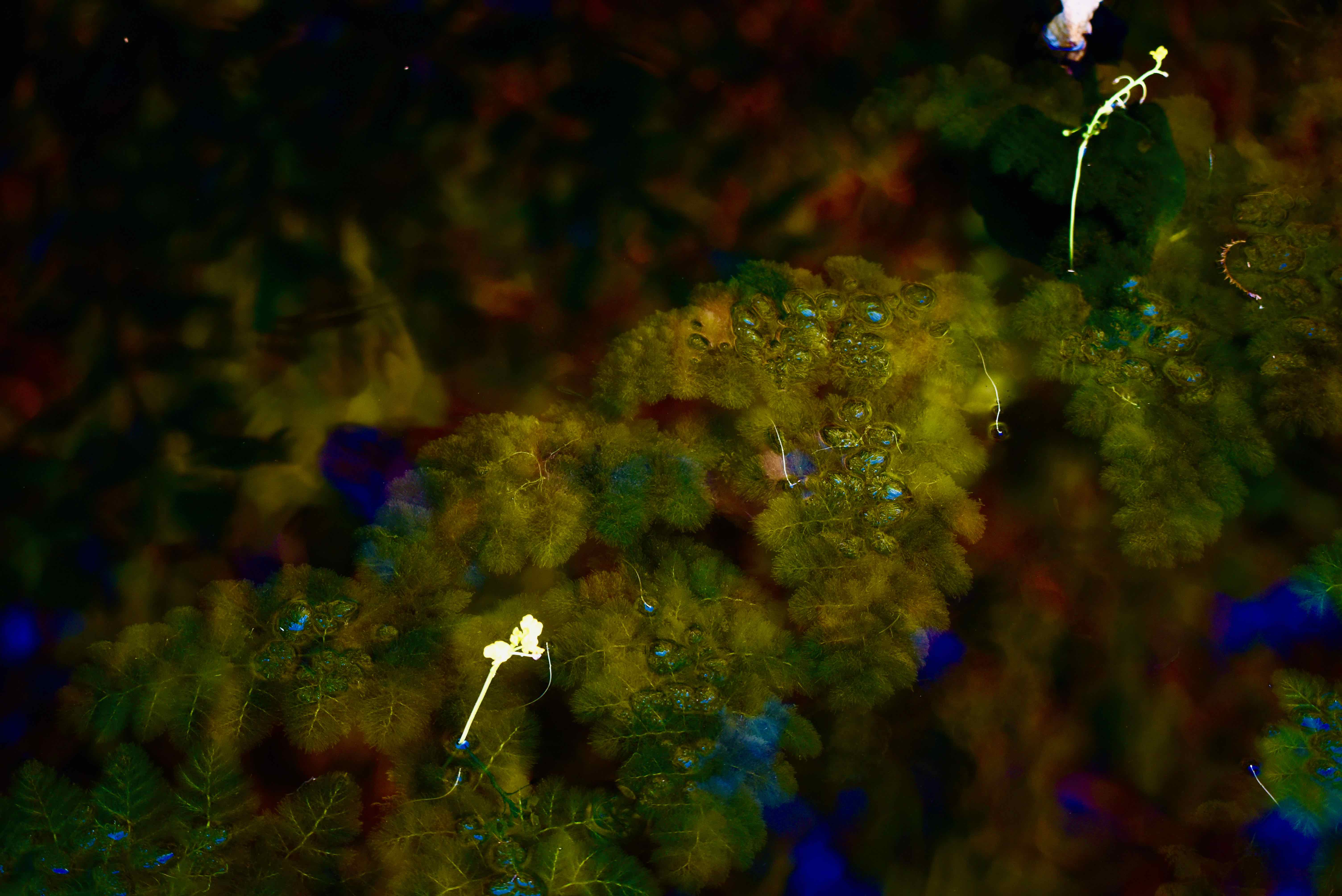
Leafy bladderwort, photographed at Hungryland Slough Natural Area, West Palm Beach, Palm Beach County, in March 2016.
Careful! Dipping your toes in waters infested with this plant could result in losing them!
Of course, we’re being more than a bit silly, as we’re wont to do when talking about carnivorous plants. But this guy, commonly known as leafy bladderwort, is indeed a meat eater, albeit the bits of flesh it devours are extraordinarily tiny. It's not a threat at all to anything much bigger than microscopic.
Known to the world of science as Utriculata foliosa, leafy bladderwort is a perennial freshwater aquatic plant native to Florida and found in most of the Peninsula and a portion of the Panhandle. It is fairly common in South Florida.
It’s also found throughout the southeastern United States, from North Carolina to Texas sans South Carolina. Its native range includes the Caribbean, the Bahamas, Mexico, Central America, South America, and, interestingly enough, parts of Africa.
Leafy bladderwort sits suspended in water, spread out horizonatally; the only portion of the plant that extends above the surface of the water is a stalk that puts out a few bright yellow flowers. Blooming season is spring through fall.
What appears to be roots are actually a system of feathery stems and leaves armed with a multitude of tiny bladders that are the killer parts of the plant. They don’t have roots at all.
Like all member of Utriculata — and there are some 200 species worldwide — these bladders have trigger-like hairs that, when disturbed, open a door and suck in any plants and animals in the immediate vicinity. And like the Eagles’ Hotel California, once inside, they can check out any time, but they can never leave. The bladder door will never open, and those trapped inside will die and decay into nutrients, giving life to their killer.
The advantage of being carnivorous is it allows leaf bladderwort and its cousins to make a living in nutrient-poor places where there’s little competition from other plants. In fact, its presence is an indicator that the water in which it lives is fairly “clean” of nutrients.
Bladderworts absorb nitrogen from their decomposed victims, something they can’t get any other way, even if nitrogen is plentiful in the place where they live.
Some bladderwort species, particularly common bladderwort, U vulgaris are used medicinally in other parts of the world, but our guy isn’t. Common bladderwort isn’t native to Florida or any other part of the U.S. According to the Institute for Regional Conservation, leafy bladderwort is cultivated and used in natural landscapes and restorations.
Leaf bladderwort is a member of Lentibulariaceae, the bladderwort family.



